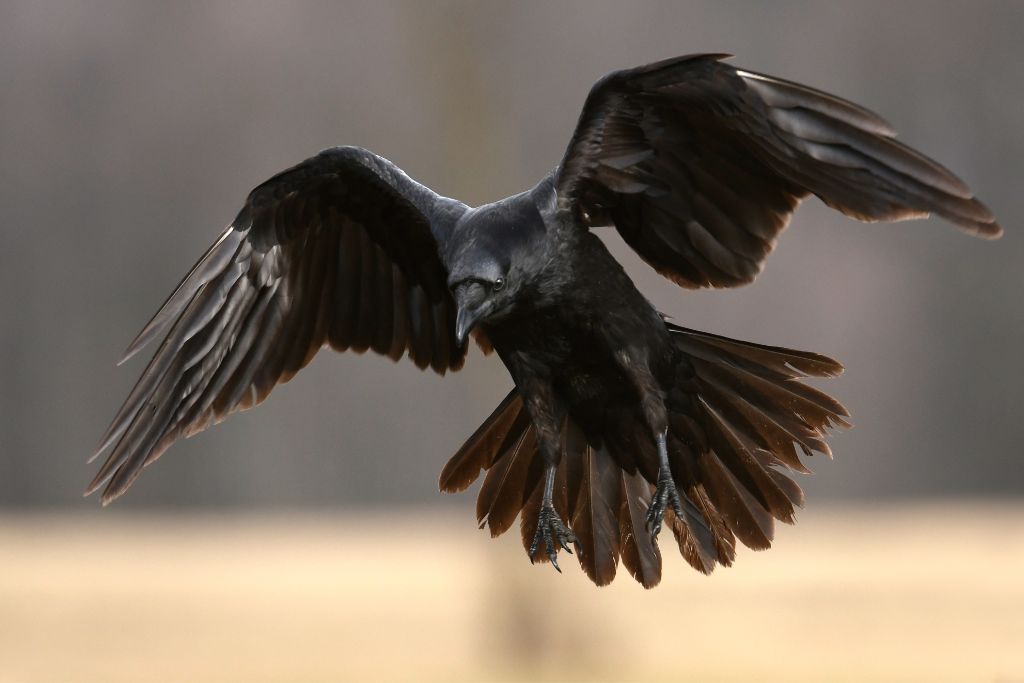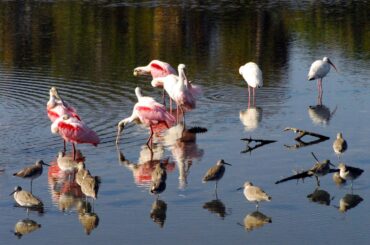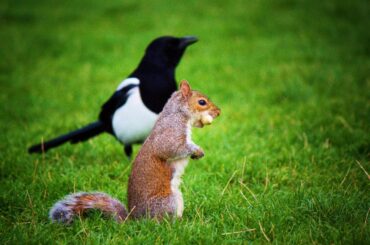Are you curious about the culinary preferences of these intriguing avian creatures? Ever wonder what delights the taste buds of ravens, those enigmatic and intelligent birds? From their undeniable knack for survival to their fascinating problem-solving skills, ravens have long captured our admiration. But what fuels these remarkable beings?
Ravens, with their dark and glossy plumage, have fascinated humans for centuries. These highly adaptable birds have survived in various environments and thrived, establishing their dominance. One of the keys to their success lies in their diet – a diverse array of foods that sustain their clever minds and strong bodies.
Picture a raven perched high in a tree, a piece of bread in its beak. But don’t let appearances deceive you; these birds are no mere scavengers. To ensure their survival, ravens have been observed hiding food and even utilizing tools. Their diet includes various plant and animal matter, showcasing their adaptability and resourcefulness.
What Do Ravens Eat in the Wild?
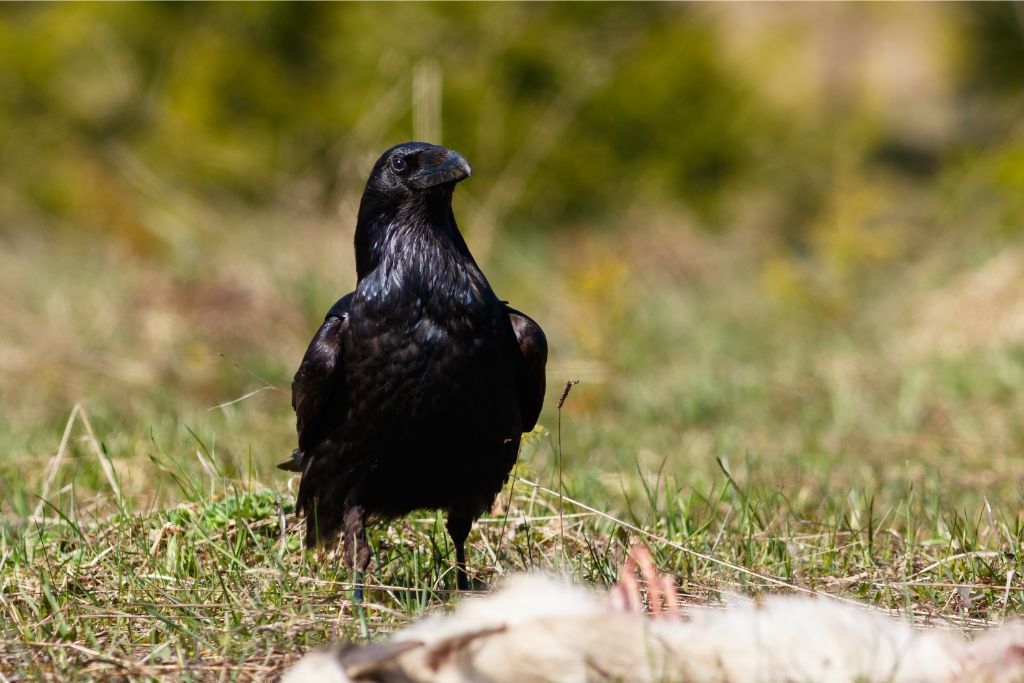
Ravens, bright and clever birds, have a varied diet that shows adaptability. These intelligent creatures feast on various food items, ranging from animal-based to plant-based sources.
Insects, earthworms, and small rodents found on the forest floor are favorites of the raven, an opportunistic scavenger. They’re skilled hunters, too, preying on other birds’ eggs and even young chicks.
These winged experts also have a knack for spotting carrion – the remains of animals that have already met their end. In this way, ravens play an essential role in maintaining ecological harmony by removing waste products from the environment.
In addition to their meaty morsels, ravens appreciate a good helping of plant-based food. They have a palate for fruits like berries and apples, making the most of the season’s bounties. It’s incredible how ravens eat the best animal and plant diets.
Top 16 Raven’s Favorite Food
These interesting birds, known for their colorful antics and tight social relationships, eat various foods to survive across habitats. A closer look at their top 16 favorite foods reveals surprising details about their diet and ecological role.
Carrion
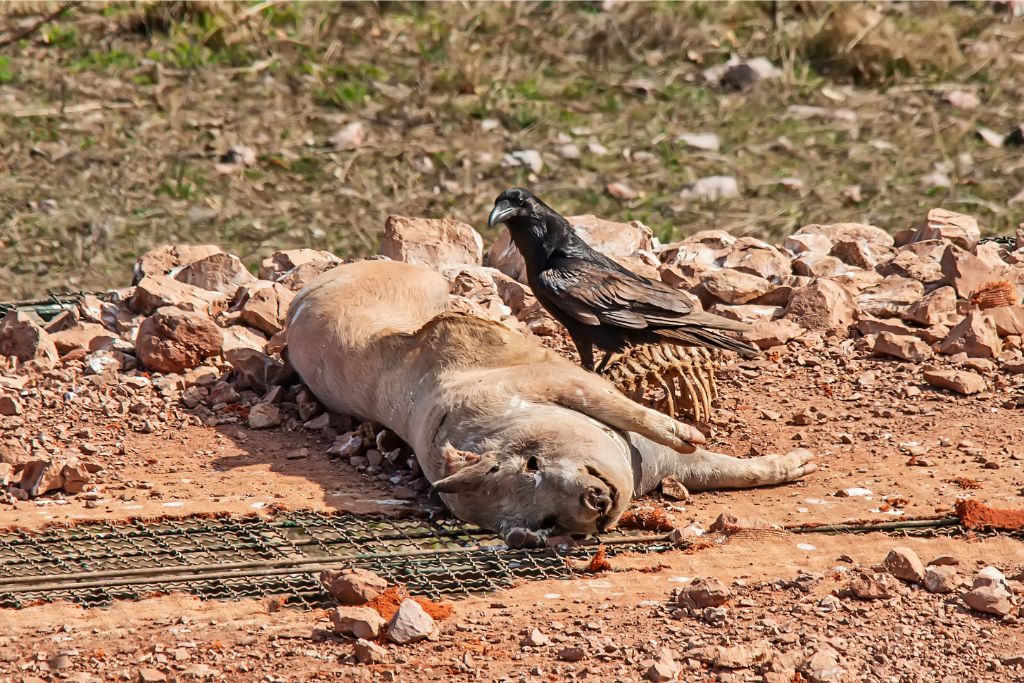
Ravens play a role in nature that is scary but also very important. They possess an extraordinary knack for locating and feasting upon carrion, which refers to the remains of deceased animals. These resourceful birds prevent the disease from decaying carcasses, keeping the environment clean.
Natural balance allows them to bite into flesh and consume their strange feast with solid beaks and good eyesight.
Insects

These intelligent birds have a special penchant for devouring insects like beetles, caterpillars, and grasshoppers.
Not only are insects a rich source of protein, but they also play an essential role in controlling insect populations. They maintain the delicate harmony of ecosystems. Watching a raven deftly snatch an insect mid-flight is a testament to its agility and adaptability.
Fruits
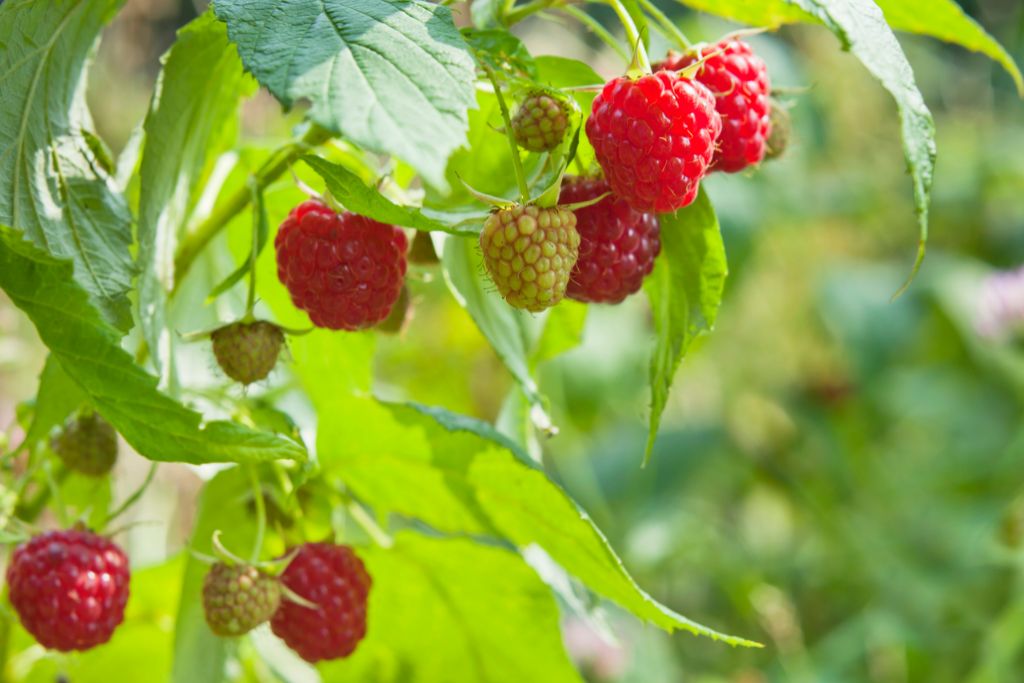
Who would have thought ravens enjoyed fruits, as well? Yes, you heard it right! These feathered pros love to eat all kinds of foods, like berries, apples, and figs. While not their primary source of sustenance, fruits provide ravens with essential vitamins and nutrients. Their strong beaks aid in pecking into juicy treats, showcasing the marvels of nature’s design.
Seeds
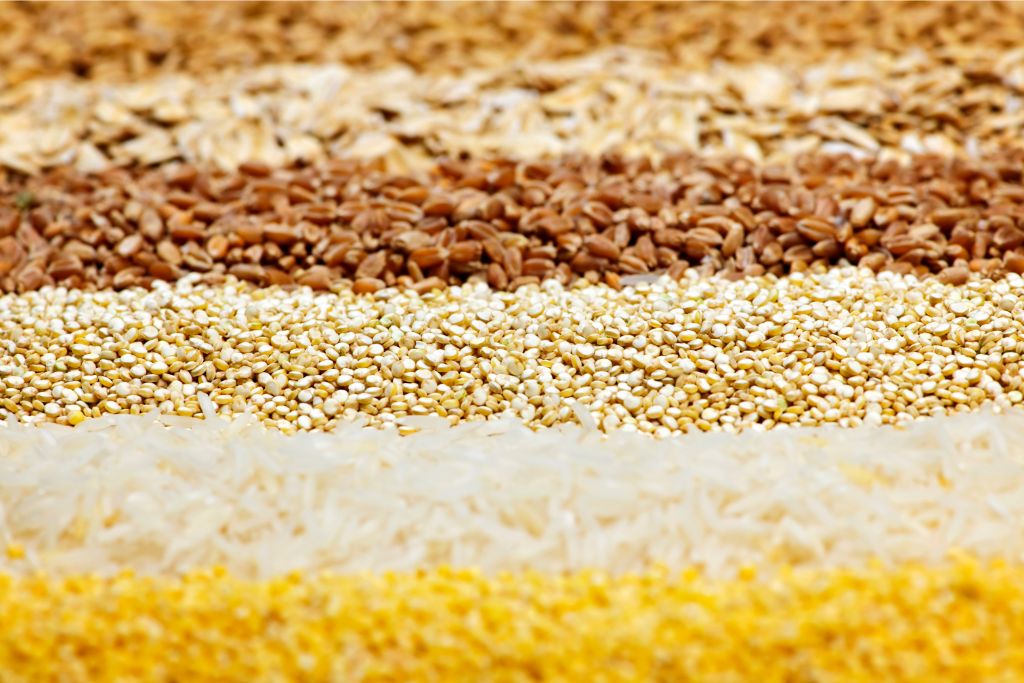
Seeds, those tiny packages of life, are one of the ravens’ preferred meals. These clever birds feast on various seeds, from sunflower seeds to pumpkin seeds and everything in between.
Seeds provide ravens with a nutritious boost packed with essential vitamins, minerals, and energy. Seeds offer ravens energy for their aerial acrobatics and clever adventures, just like porridge gives people energy in the morning.
Nuts
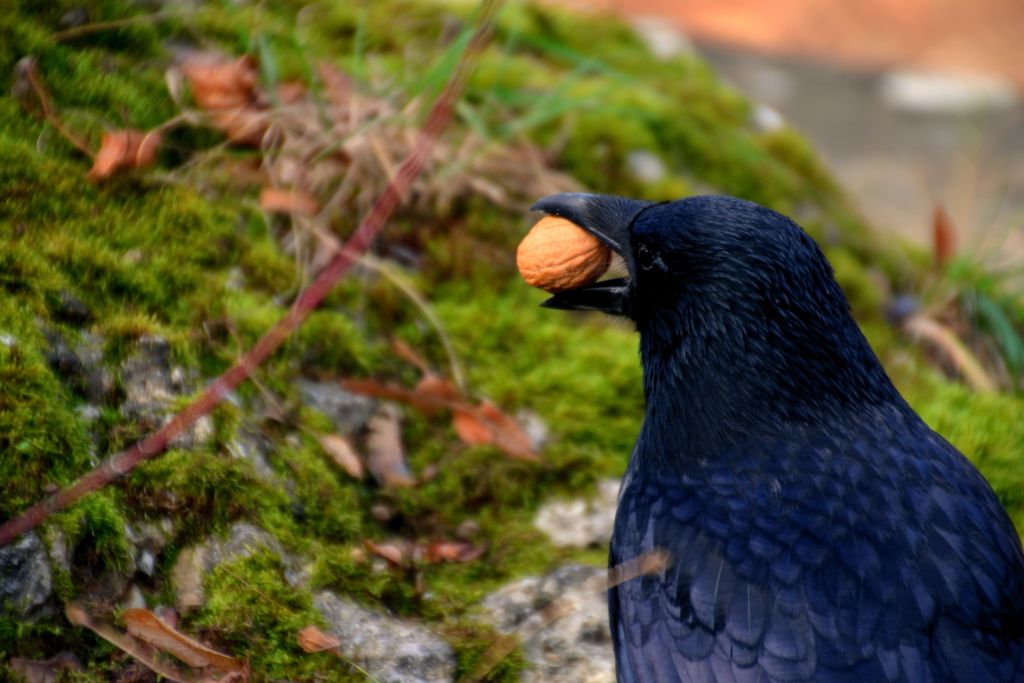
Nuts are another favorite on the raven’s menu. These intelligent birds use their strong beaks to crack nuts and disclose their tasty contents. Almonds, walnuts, and pecans provide healthful fats, proteins, and nutrients that keep ravens fit.
Small Rodents
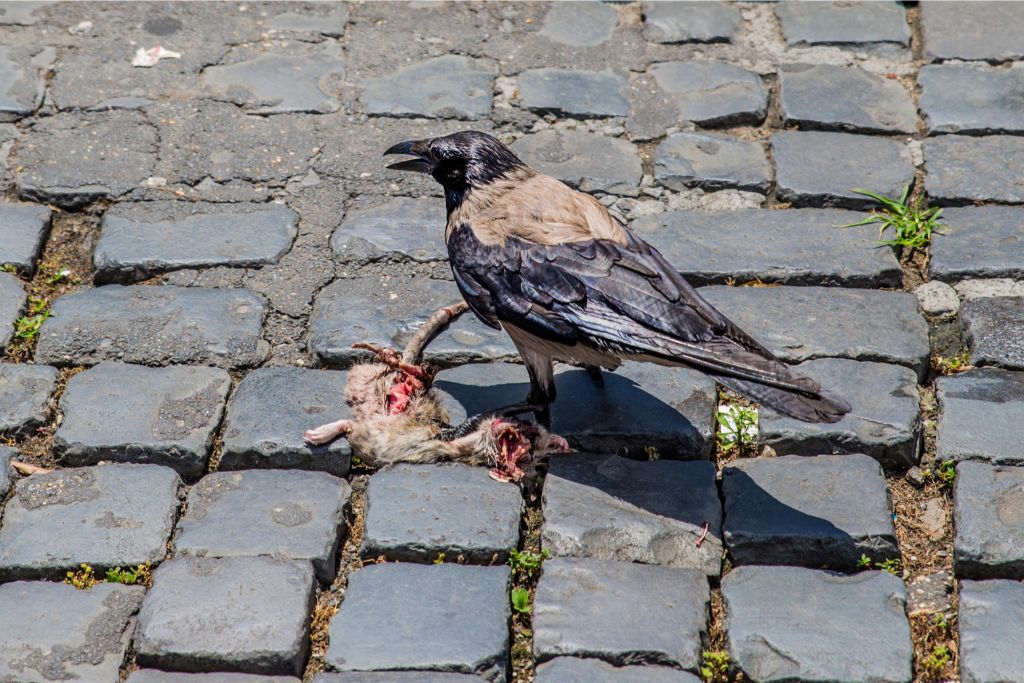
As hunters of the grasslands and meadows, ravens reign supreme. These clever birds showcase their predatory prowess by preying upon small rodents, like mice and voles. Their sharp beaks and quick reflexes allow them to catch these elusive critters, displaying the complex predator-prey cycle.
Eggs (of Other Birds)
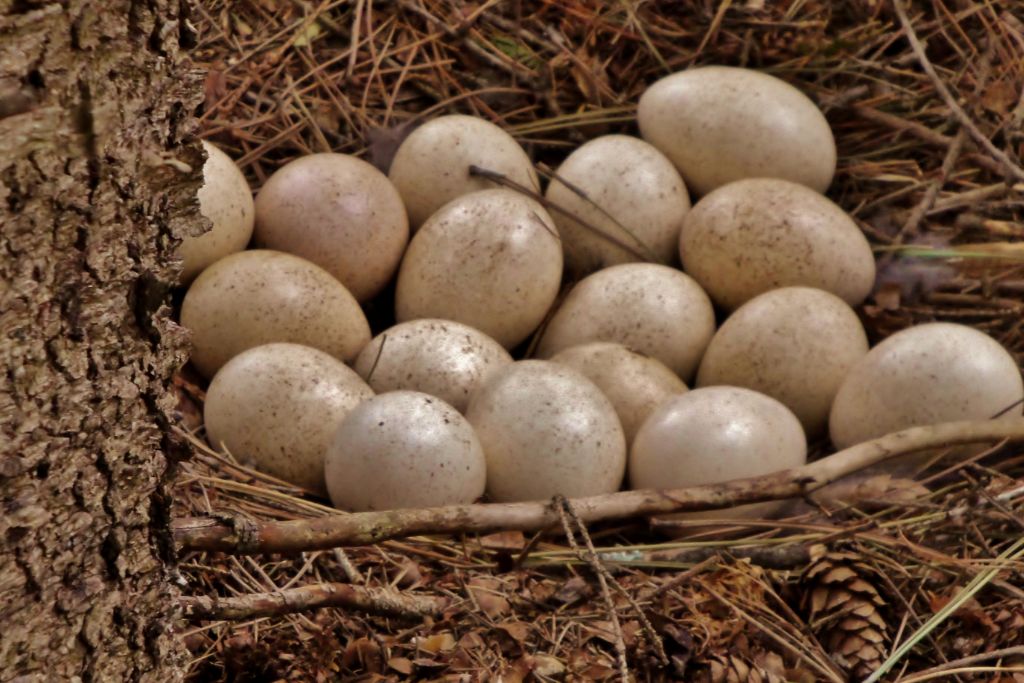
Eating the eggs of other birds is a tricky and controversial choice. While controversial, ravens occasionally steal other avian species’ eggs. Although seemingly contrary to our nurturing instincts, this behavior is an example of nature’s complexity.
It highlights the intense competition for resources in the wild. It also demonstrates the raven’s remarkable capacity to change with the times.
Grain Crops
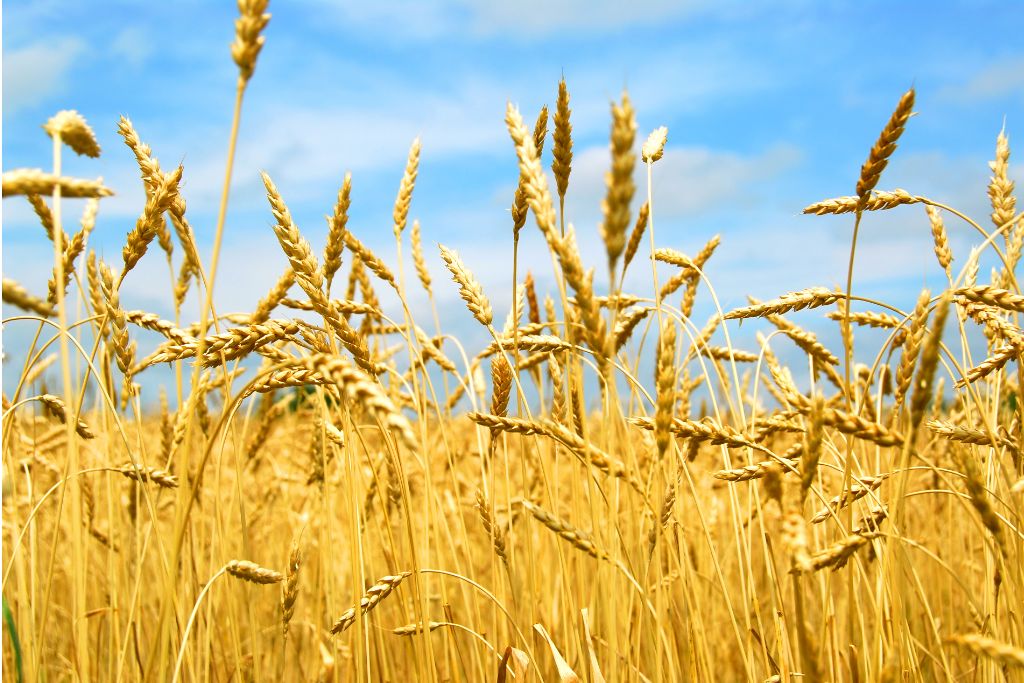
Amongst the golden fields of plenty, ravens make their mark. While not commonly associated with grain consumption, ravens have been known to explore wheat, barley, and oats fields.
These hardy birds display their ingenuity by adapting to human-altered landscapes and making the most of available resources.
Small Fish
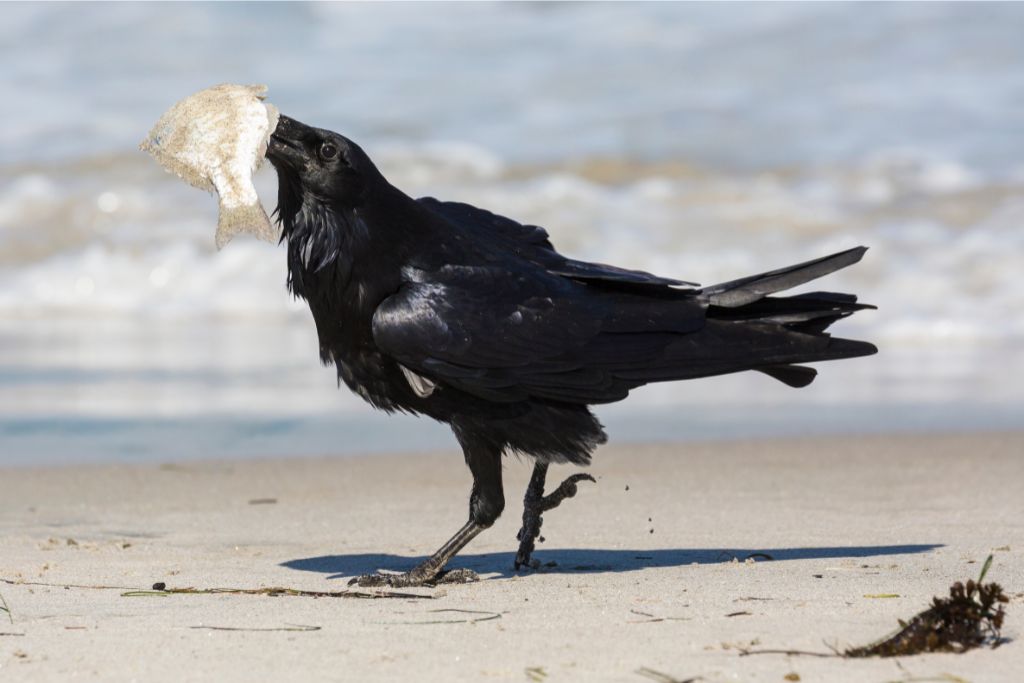
The shores and streams become ravens’ dining stages. Near water bodies, ravens showcase their versatility by hunting small fish. Their keen eyesight and swift reflexes emerge as they swoop to catch an unsuspecting fish. This behavior underlines their adaptability to a range of habitats and food sources.
Crustaceans
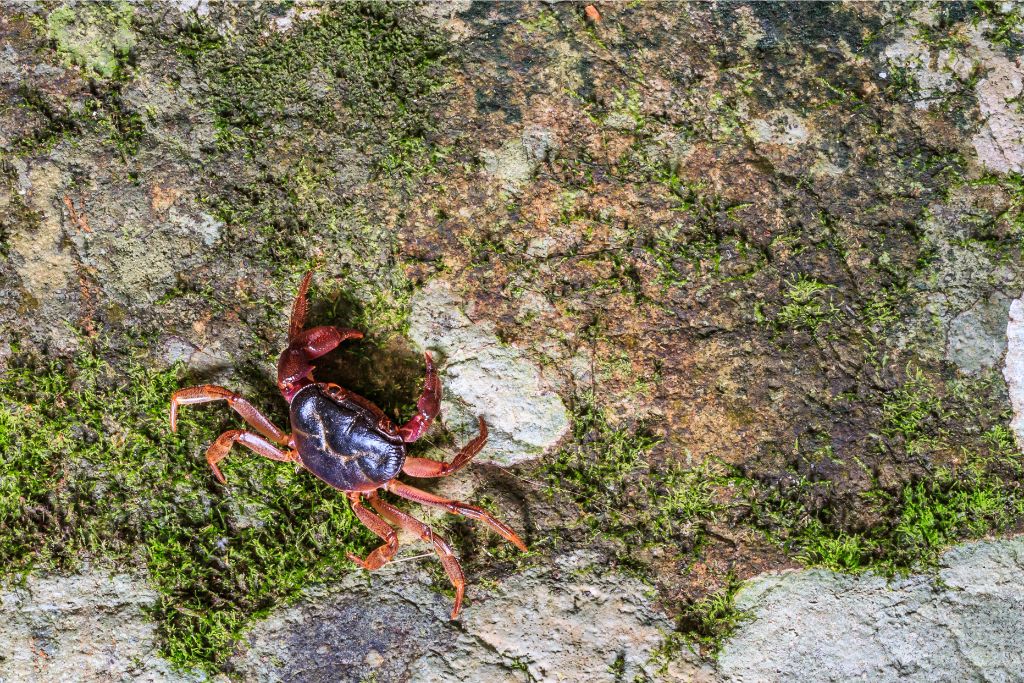
Imagine a raven perched near the coastline, keenly eyeing the shallow waters below. Crustaceans, those intriguing sea creatures, become an irresistible feast for ravens.
These include crabs, lobsters, and shrimp, all providing a rich source of protein and essential nutrients. With their strong beaks, ravens expertly crack open the shells to access the succulent morsels. It’s a real show of how good nature is at making food.
Reptiles
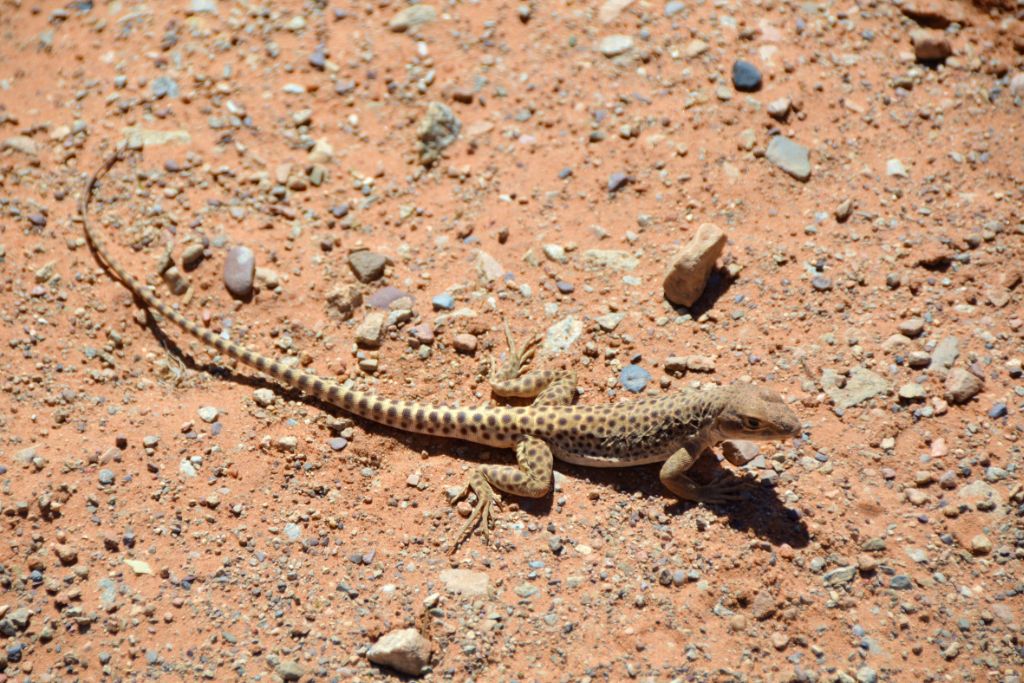
In sun-dappled meadows and arid landscapes, ravens unveil their affinity for reptilian fare. From slithery snakes to basking lizards, these birds exhibit fearlessness as they eat a challenging diet. The crunch of scales and ripple of muscle beneath their beaks show why ravens are so amazing.
Amphibians
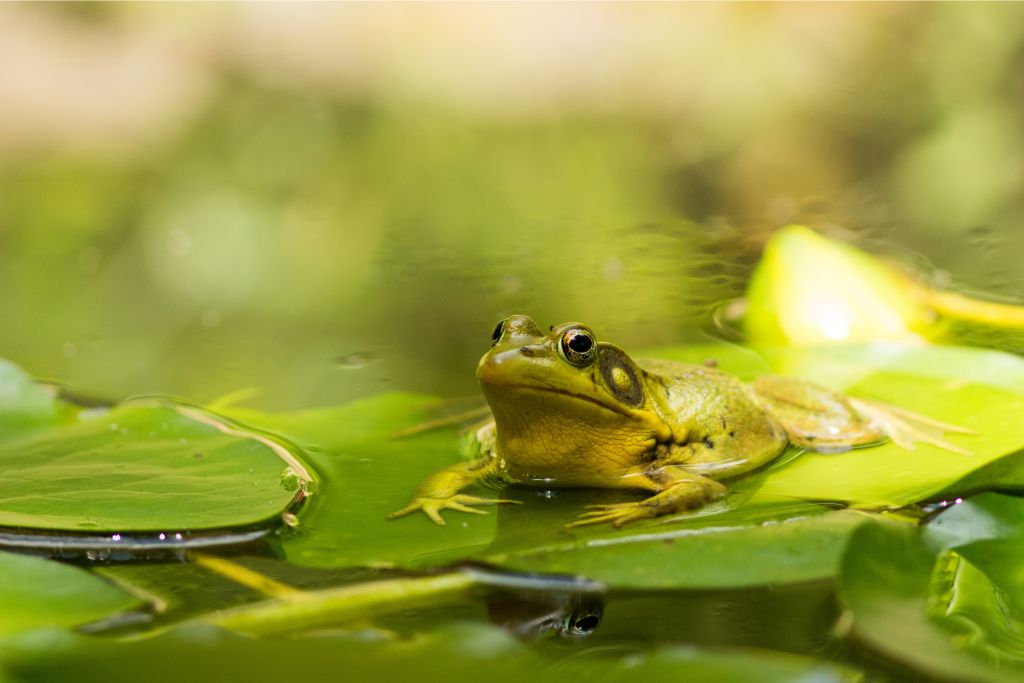
Amphibians, which can live on land and in water and are hard to find and fascinating, become a tasty treat. Frogs, with their unmistakable calls, and newts, adorned in vibrant hues, offer a sensory experience unlike any other. Ravens can forage day and night to enjoy these exquisite foods in the moonlight.
Small Birds
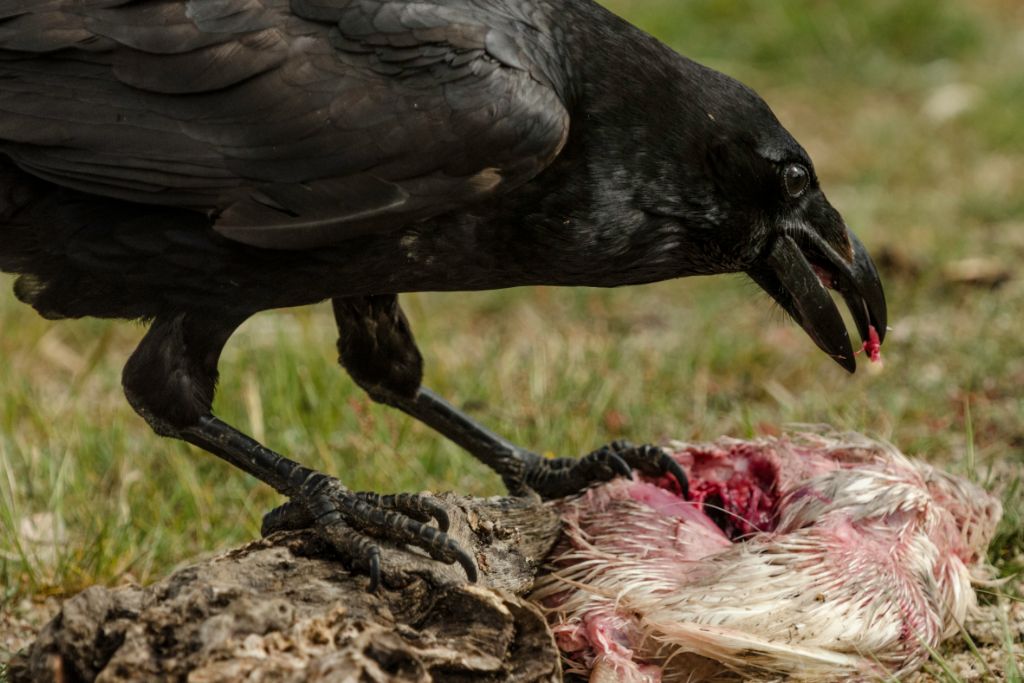
The skies transform into a canvas of pursuit and evasion when ravens set their sights on small birds. They engage in thrilling aerial pursuits with agile flight maneuvers and calculated precision.
Their strong wings and sharp beaks serve them well as they navigate the intricate dance of predator and prey. While the chase may be intense, it underscores the raven’s role in maintaining a balanced ecosystem.
Human Leftovers and Garbage

Ravens again show their versatility by eating human trash in busy cities. Their keen intelligence allows them to identify edible items amidst the chaos of human activity. From half-eaten sandwiches to forgotten snacks, ravens help manage garbage while enjoying city life.
Small Mammals
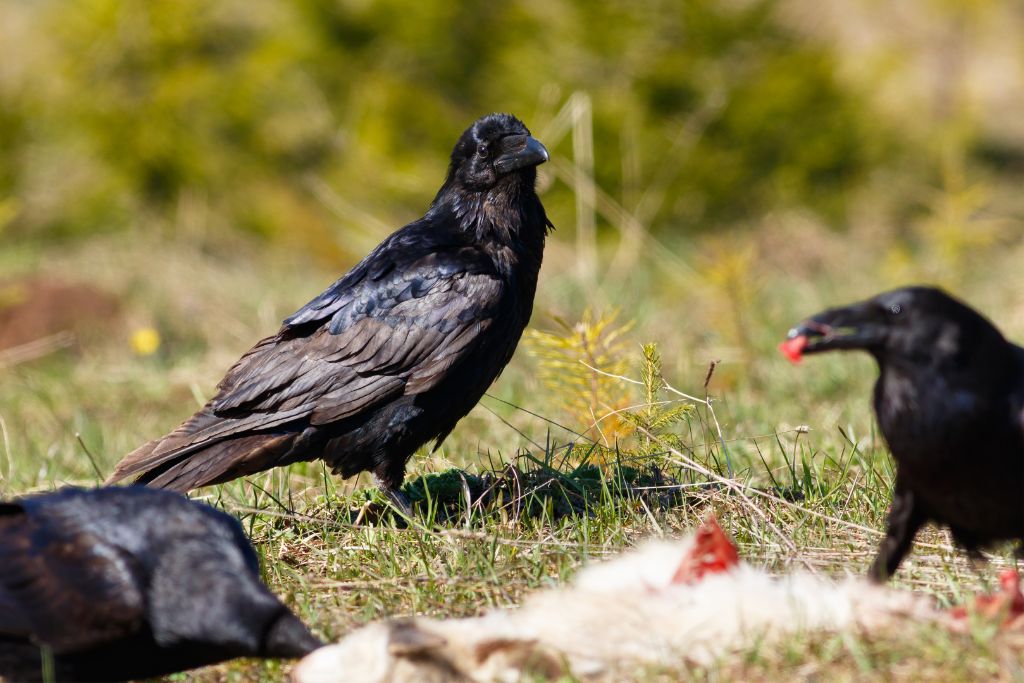
Through wooded meadows and open fields, ravens venture forth in search of small mammals to satisfy their voracious appetites. Squirrels, with their agile antics, and rabbits, with their delicate features, become subjects of this remarkable hunt.
Crafty and strong, ravens use various methods to secure their meal, cementing their place in nature’s drama.
Worms
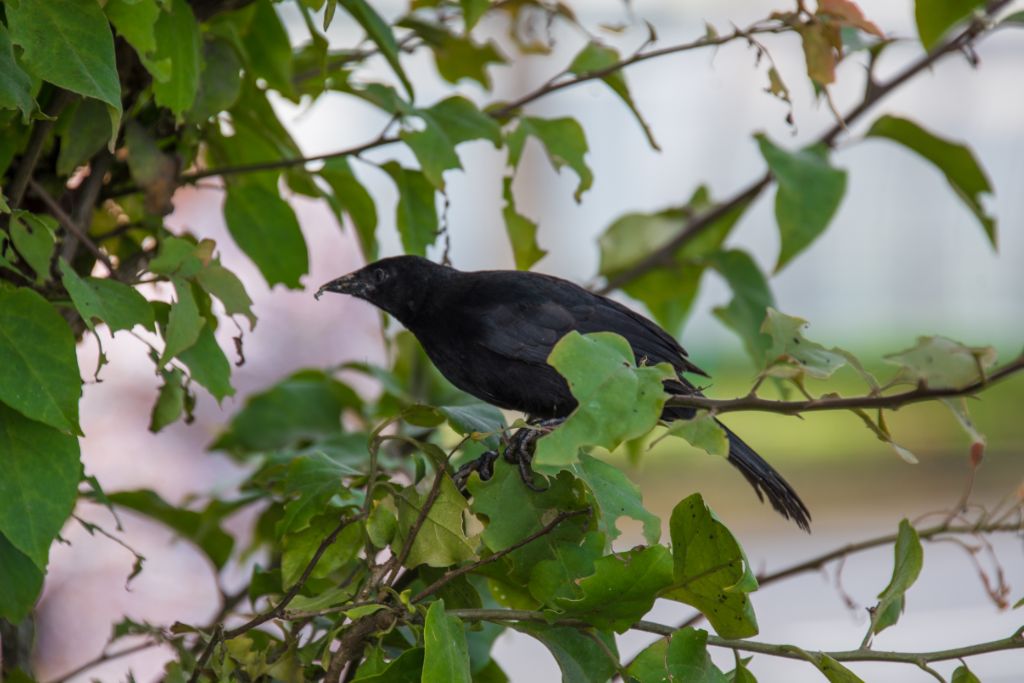
Beneath the damp embrace of the forest floor, ravens unearth one of nature’s most unassuming yet vital creatures – worms. These wiggling wonders are crucial in nutrient cycling, breaking down organic matter, and enriching the soil.
Ravens, always seeking food, dance this delicate balance, emphasizing their role as ecological stewards.
How to Feed a Raven? Simple Guide
Providing sustenance for these magnificent creatures is an absolute pleasure. Here’s a simple guide to help you get started and make some new feathered friends:
1. Gather the Right Treats
Ravens enjoy a diverse diet, just like us. Offer them a variety of foods, such as nuts, fruits, and even small bits of cooked meat. You can also include some birdseed in the mix. Imagine you’re setting up a buffet for your raven pals.
2. Find a Suitable Feeding Spot
Ravens are a bit like us when it comes to dining – they prefer a comfortable and safe spot. Choose an area in your yard or garden where they can enjoy their meal without feeling too exposed. You could place a sturdy branch or a feeding platform so they have a cozy place to perch.
3. Offer Fresh Water
Like how you quench your thirst with water, ravens need a refreshing drink, too. Place a shallow dish of clean water near their feeding spot. Remember to refill it regularly, especially on hot days. A hydrated raven is a happy raven!
4. Respect Their Space
While it’s exciting to watch ravens up close, it’s essential to give them their space. Find a spot where you can observe them without making them feel uncomfortable.
5. Be Patient and Observant
Building a connection with the Ravens takes time, but it’s worth it. Stay patient and watch their behavior. They might be cautious at first, but as they get used to your presence, they’ll become more comfortable. Observe their cues – if they return for seconds, you’re doing something right!
6. Avoid Processed Foods
Just like you try to avoid too much junk food, it’s best to skip processed and salty foods when feeding ravens. These can be harmful to their health. Stick to natural, unseasoned treats to keep the raven in tip-top shape.
7. Maintain a Routine
Ravens appreciate a reliable dining schedule. Try to feed them around the same time each day. They’ll come to expect your visits, and it will also give you a chance to bond with these intelligent birds.
8. Spread the Word
Teach your friends and family about the joys of feeding ravens. Share your experiences and knowledge with others, and encourage them to create raven-friendly feeding spots.
Final Thoughts
After finishing our raven food research, it’s evident that these extraordinary birds have a wide variety of tastes. From crunchy nuts to juicy berries, ravens have shown that they are some of the best eaters among birds. Learning what ravens eat is about appreciating nature’s delicate balance and bonding with these intelligent creatures.
Let’s admire their spectacular flight and celebrate their resourcefulness in obtaining food as we watch them fly.
FAQs
Where Do Ravens Hunt for Food?
Ravens hunt for food in various habitats, including forests, fields, urban areas, and coastlines.
What Do You Feed a Crow or Raven?
Crows and ravens can eat various foods, including fruits, nuts, insects, carrion, and human food scraps.
What are 5 Interesting Facts About Ravens?
1. Ravens are brilliant birds, capable of problem-solving and tool use.
2. They have various vocalizations and can mimic sounds, including human speech.
3. Ravens engage in playful behavior, such as sliding down snow-covered roofs.
4. They form complex social structures and often mate for life.
5. They have been part of mythology and symbolism in various cultures, often associated with wisdom and magic.
Are Ravens Friendly to Humans?
Ravens can show curiosity and interact with humans, but their behavior varies. Food may make them used to people, but their interactions differ from tamed pets.
What Attracts Ravens?
Ravens are attracted to food sources, including carrion, garbage, and scraps. They are also drawn to areas where they can scavenge and find suitable nesting sites.

